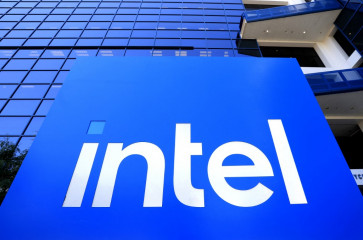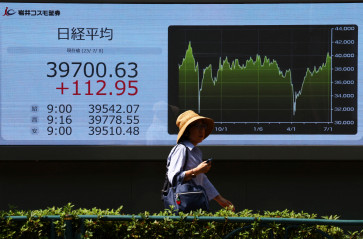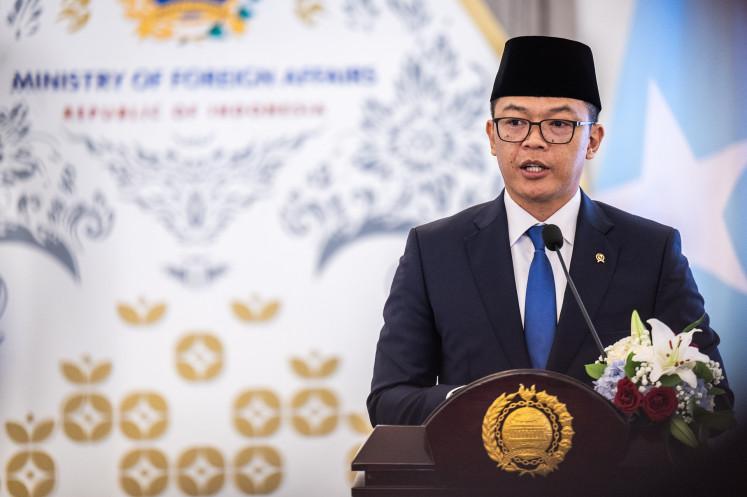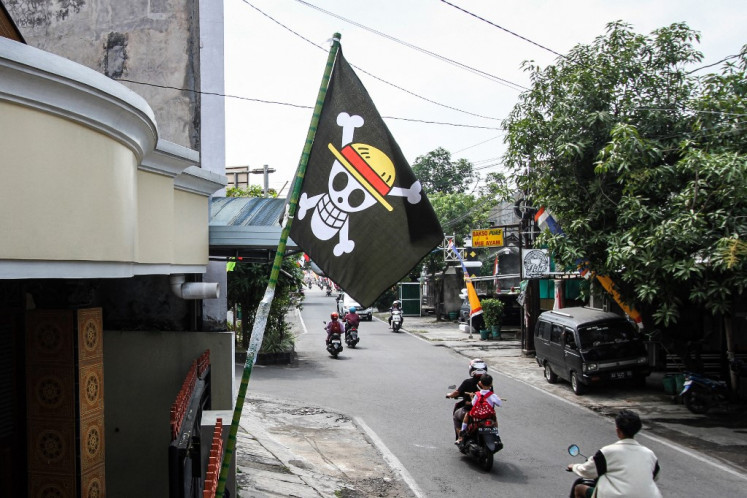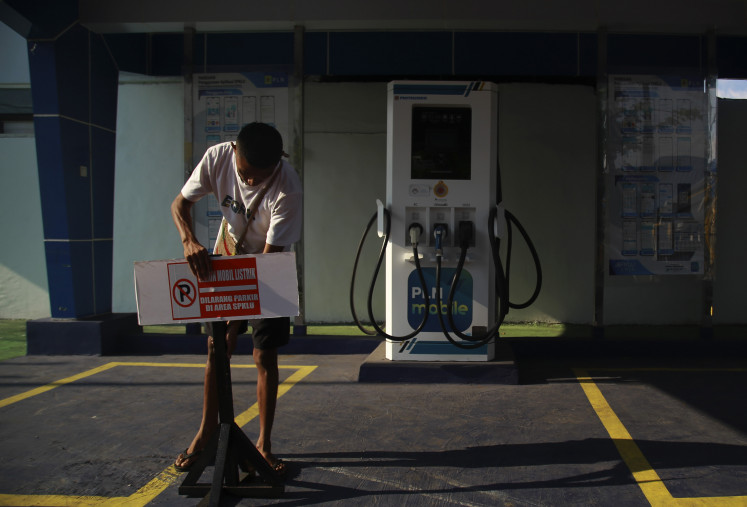Popular Reads
Top Results
Can't find what you're looking for?
View all search resultsPopular Reads
Top Results
Can't find what you're looking for?
View all search resultsAnalysis: Investment realization is still solid
Amid continued global economic uncertainty, Indonesia’s total direct investment realization reached an all time high of Rp 83
Change text size
Gift Premium Articles
to Anyone
A
mid continued global economic uncertainty, Indonesia’s total direct investment realization reached an all time high of Rp 83.3 trillion (US$8.7 billion) in the fourth quarter (4Q12) of this year, up 1.8 percent quarter-on–quarter (q-q) and 18.6 percent year-on-year (y-y), driven by foreign direct investment (FDI) that remained strong, growing 23 percent y-y to Rp 6.8 trillion ($5.9 billion), reflecting not only Indonesia’s solid fundamentals but also continued positive sentiment on the country on the part of investors.
A relatively robust 4Q12 direct investment realization translated to the strong full-year 2012 figure of Rp 313.2 trillion ($32.6 billion), up 24.6 percent y-y, beating the government’s target of Rp 283.5 trillion ($29.5 billion), but in line with our estimate. Overall, the full-year 2012 FDI increased 26 percent y-y to Rp 221 trillion ($23 billion), while domestic direct investment (DDI) reached Rp 92.2 trillion ($9.6 billion), up 21.3 percent y-y.
The manufacturing, mining and agriculture sectors were the main drivers of 2012’s investment realization (exhibit 1). On the FDI side, we saw that Singapore (18 percent), Japan (9 percent), South Korea (7 percent) and the US (5 percent) were the biggest foreign direct investors (exhibit 3).
It is worth pointing out that the Investment Coordinating Board (BKPM) expects Indonesia’s 2013 investment will continue to remain strong, reaching Rp 390.3 trillion ($40.6 billion) supported by the ongoing confidence of offshore investors in Indonesia’s economic outlook ahead.
Additionally, chairman of BKPM Chatib Basri claimed that they still had at least Rp 376 trillion ($39.2 billion) of investment proposals in the pipeline that could be realized in the next two to three years. In line with the BKPM’s view, we expect 2013 total investment to remain solid at $38 billion.
On a more negative note, we see that higher wages may apply risks to Indonesia’s investment climate going forward. Nevertheless, we expect investment will further expand ahead as investors continue to be attracted by Indonesia’s emerging domestic market. In contrast to China’s aging population and labor shortages, Indonesia’s young population, with a median age of 26, labor availability and rising incomes, creates a manufacturing base for producers.
In turn, solid investments have offset the impact of weakening exports, supporting Indonesia’s 2012 GDP, which we expect to grow 6.3 percent y-y. The BKPM also stated that 2012 investment realization had absorbed around 308,000 jobs. With job creation, Indonesia’s unemployment will likely drop below the 6 percent level this year, the lowest ever. At this stage, coupled with solid and sustainable domestic demand, we believe that investments will support our 2013 GDP growth to slightly rise to 6.4 percent (exhibit 2), remaining one of the highest in the region.


The writer is an economist at PT Bahana Securities



